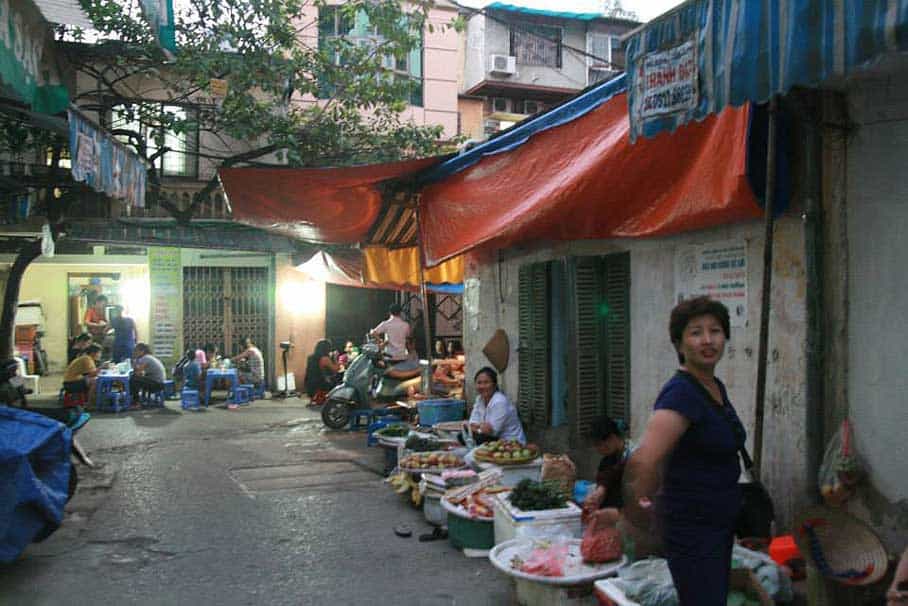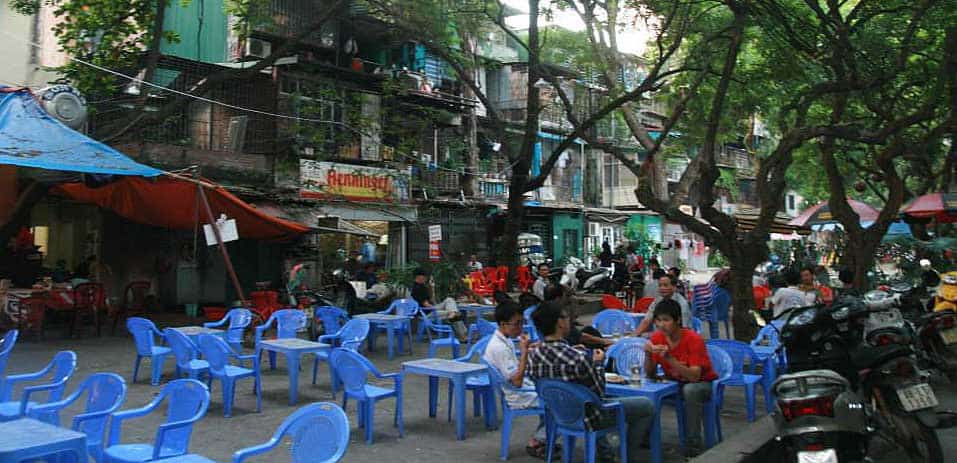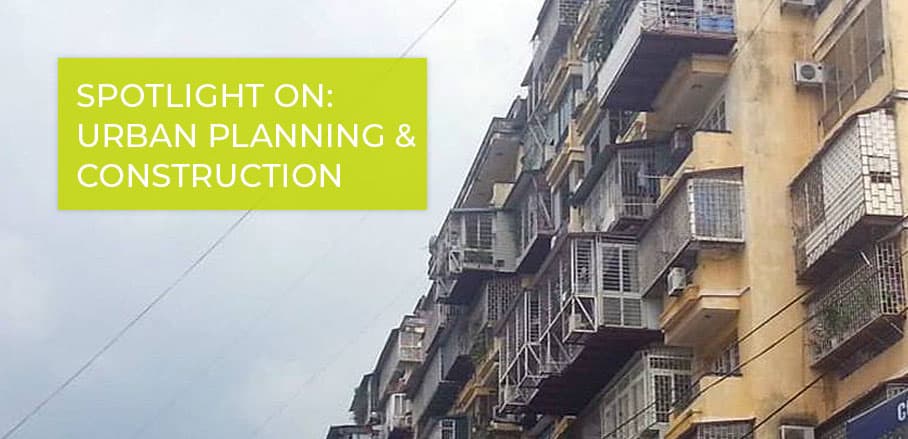When Communities Transform Old Socialist Housing into Adequate Housing – Part 2
You can read Part I of this article here.
Socialist-era apartment buildings in Vietnam’s cities, so-called KTT, are decaying rapidly. Tenants’ community organisations could help upgrade them and prevent redevelopment, says Boram Kimhur.
Strong Communities in Multi-storey Apartment Blocks
Generally speaking, one would not expect a strong community culture in large multi-storey apartment blocks. But it exists in KTT. In each building block, or every two blocks, residents have formed strong social bonds. They take care of their members (especially elders, children, and poor families), handle common problems, organise community activities, and make sure their members follow informally agreed-upon community rules.
In combination with Vietnamese village culture, the unique history of KTT and Vietnam’s administrative system have formed a strong community culture. Historically, KTT residents used to work for the same companies or organisations. Today, they or their relatives are still living in the same building. Adding to this, the system of Resident Groups (called Tổ dân phố) has an influence. The Resident Group is the lowest level of the administrative unit in Vietnam. Generally, fifty to one hundred households form a group. In KTT, this group is the same as the resident community in each building block (or every two blocks). The group members discuss and make agreements on issues of shared concern.

© Boram Kimhur, local markets in Kim Lien KTT, Hanoi, 2013
KTT Communities Have Great Potential to Lead the Upgrading Process
Problems similar to those of KTT in fact appear in many former Soviet Union countries. Some cities reformed the management system of Socialist-era residential blocks by handing over control to residents’ organisations, such as Home Owners Associations (HOAs), or housing cooperatives. They developed policies that enable the residents’ organisations to improve the socialist housing blocks, and have since resulted in better building maintenance, reduced upgrading cost (due to the improvement of transparency), and increased trust between residents and the municipality.
In other countries, one of the key challenges was how to organise community-based decision-making. But as described above, many KTT areas already have a well-organised community structure. For instance, in Hanoi, some community leaders voluntarily monitor and manage the building repair process by a state-owned housing management company. Although there is no formal system, the leaders try to make sure that the assigned companies deliver good quality service and use the government budget in a transparent way.
In addition, KTT communities have played an important role concerning residents’ welfare and communication with the local government. The formation of HOAs in former Soviet Union countries was limited to the matters of housing maintenance. However, in Vietnam, we can consider a community-based system for more comprehensive goals. A community-driven KTT management can be a potential tool for community-based welfare, and for empowering the residents to become important stakeholders in urban planning.

© Boram Kimhur, open space between building blocks, Kim Lien KTT, Hanoi, 2013
Key Elements to Consider for Community-driven KTT Management
The first step will be to establish a system that enables KTT communities to become a legal entity. The communities should be entitled to be an official partner of the city, to manage financial resources, and to monitor the contractors’ performance quality. The government would also need to establish a responsible body for supporting and communicating with the communities. Direct partnership between communities and the government can increase not only work efficiency but also transparency and trust between them.
The mechanism of community development funds (CDFs) can make the approach more successful. Communities can pool diverse financial resources not only from the government but also from national and international donors, microfinance programmes, and communities’ own saving funds. For instance, Kyrgyzstan launched a pilot project called “Metafinance” in late 2010. It was formed in partnership with Habitat for Humanity International (HFHI), a micro-credit finance institution, the city authorities, and a guarantee fund from a donor organisation. Various grants and loans for energy efficiency and other capital improvements were channelled to HOAs through a municipal fund.
A similar financial mechanism can be formed at the community level in Vietnam. When communities manage finance, they naturally develop a strong motivation for cost reduction while maximising construction quality. Furthermore, and perhaps more importantly, this mechanism can enable communities to participate in decision-making regarding the issues of KTT buildings and neighbourhood development.
The establishment of community-based organisations and CDFs for KTT is definitely feasible. Many communities (overlapping Resident Groups) already have small-scale group funds. These funds usually consist of regular contributions by households, fees from street vendors in KTT neighbourhoods, small business owners operating in the yard between blocks, as well as awards from ward authorities (granted for encouraging the Resident Groups’ community culture). The communities use these funds for various activities, ranging from maintenance to community activities and welfare for families in need.
The third important step would be to provide the necessary technical support. Simply awarding the status of legal entity to a community will not automatically make things operational and sustainable. The community organisations may need to learn how to assess problems, define concrete needs, negotiate with other stakeholders, and select proper companies for building maintenance, and monitor the contractors. Information dissemination and technical support centres will also be necessary.
Action is Needed as Soon as Possible
So far, low economic feasibility in connection with the complexity of legal issues has hampered redevelopment projects. Many were delayed or cancelled. However, residents will be under threat of losing their community and affordable housing at any moment unless we take alternative action very soon.
Summing up, KTT is not simply about apartment blocks: the blocks are intertwined with their respective neighbourhood’s social structure that is economically and socially inclusive, especially for low- and low-middle income groups. The system of Resident Groups and informally organised community activities are great assets and represent a comparative advantage of cities in Vietnam. Community-driven upgrading and maintenance of KTT can provide a socially sustainable and economically feasible solution. Additionally, this approach can place the quality of the residents’ life at the centre instead of focusing solely on the quality of the physical structure of the apartment blocks.
